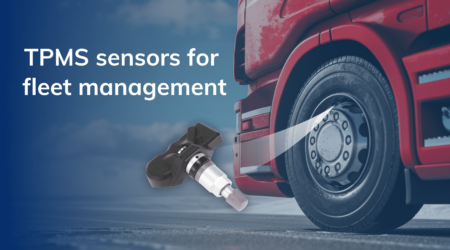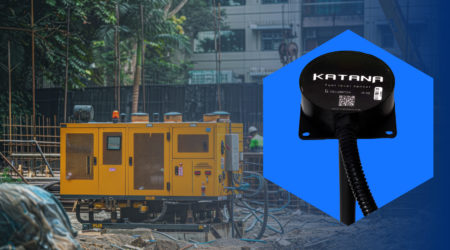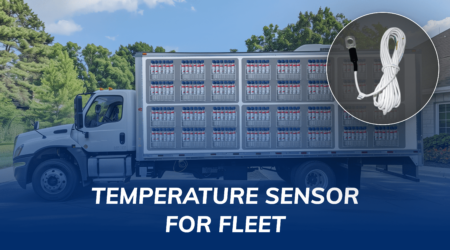What is Fuel Sensor? How does it work?


Fuel sensors, integral components in monitoring and managing fuel consumption, play a pivotal role across various industries. These devices, designed to measure the amount of fuel in a tank, offer crucial data for optimizing fuel usage, preventing theft, and ensuring the proper functioning of engines. Their importance cannot be overstated, especially in sectors where fuel efficiency and management directly influence operational costs and environmental impact.
In essence, a fuel sensor provides real-time insights into fuel levels, enabling proactive measures in fuel management. This functionality is critical not only in automotive applications but also in aviation, marine, and industrial settings where fuel economy and efficiency are paramount. The ability to accurately monitor fuel levels helps in planning refueling schedules, maintaining optimal performance, and reducing unnecessary fuel expenditure.
As we delve deeper into how these sensors work, their types, applications, and benefits, it becomes evident that these devices are foundational to modern fuel management systems.
Fuel sensors actively measure fuel levels in tanks or storage systems, crucial for monitoring consumption. They optimize usage, prevent theft, and maintain engine efficiency while ensuring safety and environmental compliance across automotive, aviation, marine, industrial, and consumer sectors.
How Fuel Sensors Work
Fuel sensors typically operate by detecting changes in a physical property (such as resistance, capacitance, or ultrasonic reflection) that correlates with the fuel level within a tank. These changes are then converted into electrical signals, which can be interpreted by monitoring systems to indicate the current fuel level. The specific working principle varies depending on the type :
- Resistive: Uses a float and a potentiometer to measure changes in resistance caused by fuel level fluctuations.
- Capacitive: Measures the capacitance between two electrodes, which varies with the fuel level due to differences in the dielectric constant of air and fuel.
- Ultrasonic: Sends ultrasonic pulses towards the fuel surface, measuring the time it takes for the echoes to return to determine the distance to the fuel surface, and hence the fuel level.
- Optical: Detects changes in light transmission or reflection within the fuel tank to measure fuel levels.
- Conductive: Uses the electrical conductivity of the fuel to complete a circuit at specific levels, indicating the presence or absence of fuel.
Types of Fuel Sensors Based on Output
Understanding the output types of fuel sensors is essential for selecting the right sensor technology that matches the input requirements of your monitoring or control system. Whether your application requires simple analog integration or sophisticated digital communication, there’s a variety of fuel sensor outputs designed to meet diverse operational needs.
Applications
Sensors are indispensable across various sectors, enhancing efficiency, safety, and sustainability. Their applications span diverse fields, each benefiting from the unique capabilities of these sensors to monitor and manage fuel usage.
Automotive Industry:
In vehicles, fuel sensors are crucial for monitoring fuel levels, contributing to efficient engine performance and fuel economy. They help in preventing run-outs, optimizing refueling schedules, and are integral to fuel theft detection systems.
Aviation:
Aircraft require precise fuel management for safety and efficiency. Fuel sensors in aviation are used to accurately measure fuel levels, consumption rates, and to ensure balance. The data from these sensors is vital for flight planning and in-flight management, contributing to safe and economical operations.
Marine:
In the marine industry, fuel sensors help in monitoring the fuel levels of ships and boats, crucial for long voyages where efficiency and management determine operational costs and environmental impact. They also play a role in preventing pollution by ensuring optimal fuel usage and detecting leaks.
Industrial Monitoring and Control:
Beyond transportation, sensors are used in various industrial applications, including power generation, construction, and agriculture. They monitor fuel supplies for generators, heavy machinery, and equipment, ensuring operational efficiency and reducing downtime due to fuel depletion.
These applications highlight the versatility and importance of fuel sensors in today’s world. By providing accurate and real-time data on fuel levels, these sensors enable smarter fuel management, contributing to cost savings, safety enhancements, and environmental protection.
Importance
The accurate measurement and monitoring of fuel provided by sensors are essential for:
- Enhancing fuel efficiency and reducing operational costs.
- Preventing fuel theft and losses.
- Ensuring safety by preventing situations that can arise from running out of fuel or fuel leakages.
- Contributing to environmental sustainability by optimizing fuel usage and reducing emissions.
Fuel sensors are integral components of modern fuel management systems, combining technological innovation with practical applications to meet the evolving demands of efficient fuel usage and sustainability.



